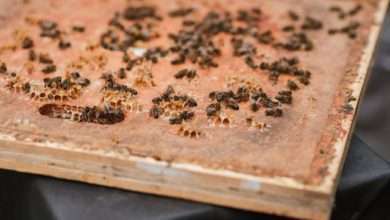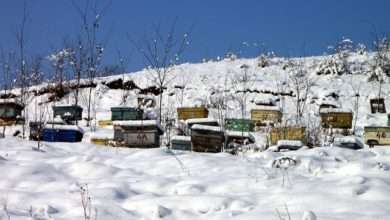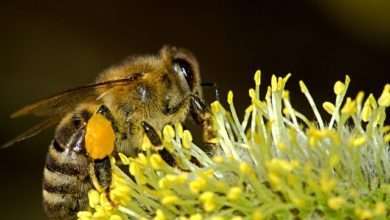Home Remedy for Bee Sting

Home Remedies for Bee Stings
Many of us have at some point had some quite painful interactions with bees in our lives. In fact, some individuals are a little bee shy from one or too many stings from these interactions.
Does this mean bees are bad and thus should be eliminated? Of course not, these tiny “monsters” usually form a very crucial part of our ecosystem as they contribute greatly to food production through pollination of our food sources. Therefore, a great deal of mass food production rests on their shoulder.
However, over the years, their numbers have consistently been declining owing to several factors such as environmental disruptions, climate change, and the use of pesticides among others. This sharp decline has subsequently affected global food production in many regions.
Nevertheless, truth be told, sometimes the bees can surely ruin your day or even contribute to health complications. Imagine pleasantly strolling in the woods or having a beautiful picnic, then out of nowhere comes the bee stinging you essentially ruining everything.
Thankfully, bee stings are usually just minor inconveniences for the majority of people as they do not amount to much as they tend to experience some mild temporary pain, which may be occasioned by some itching, redness, and swelling at the bite site.
Although, some few individuals often develop allergic reactions which can develop into quite severe manifestations like severe itching, difficulty breathing, and nausea among others. If you fall in this latter category, it is recommended you immediately seek medical assistance before your condition worsens.
However, for the majority who experience minor manifestations, there are usually several things you can always try at home to alleviate the sting symptoms without having to seek medical assistance. Listed below are some of the top home remedies most recommended and commonly utilized by many individuals:
#1. Using a Cold Compress
Honey bees are unique as they can only often sting ones after which they are guaranteed to die unlike other insects like wasps which can sting multiple times. This implies that their stingers usually remain lodged in the skin at the sting site.
As such, the first step is always to check the site and immediately remove the stinger using the edge of thin objects like fingernails or credit cards. This will reduce the amount of toxin released to your skin.
After removing the stinger, wash the area with water and soap then apply a cold compress to help reduce the severity of the pain and probable swelling. You should also ice the sting site if possible as this is also a great way of reducing the rate of venom absorption into the body tissues.
#2. Applying Baking Soda
This is another popular home remedy commonly utilized for counteracting bee stings. A sample of baking soda is usually mixed with water to form a paste which is then applied to the sting site. The solution usually neutralizes the bee venom left at the sting site immensely reducing the pain, possible swelling, and itching.
You should always apply a thick layer of the mixed baking soda and cover it appropriately with a bandage. Leave it in place for about 15 minutes or more and afterward, reapply more as frequently and as necessary.
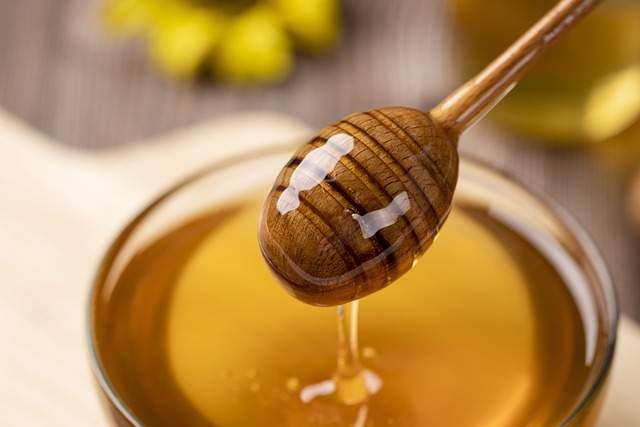
#3. Putting Honey on the Sting Site
Honey has always been used as a remedy for treating bee stings for several decades being passed down through generations. Honey has been claimed to boast several benefits to bee stings some of which include alleviating the associated pain and itching and possibly aiding in the healing of the resulting wound at the sting site.
All you need to do is apply a small amount of honey solution to the sting site, cover the area with a loose bandage and leave it in place for an hour or so.
#4. Utilizing Meat Tenderizer
Meat tenderizers are often used because they contain the enzyme papain which is believed to effectively break down the proteins from bee venom associated with the pain and itching after a sting.
You need to make a solution with a specific concentration of one part meat tenderizer and four parts water. Afterward, apply the properly mixed solution to the sting site for up to 30 minutes.
#5. Covering the Sting Site with Toothpaste
Toothpaste is among the top home remedies often used by many people to counteract bee stings. While it may seem unorthodox and probably never proven scientifically, it is believed that the alkaline component of toothpaste can neutralize the acidic honey bee venom reducing the associated symptoms like pain, swelling, and itching.
You just need to dab a little bit of the toothpaste and spread it on the affected sting site and let it work. This only works on honey bee stings and not wasps or any other bee species.
#6. Using ORMUS (Orbitally Rearranged Monoatomic Elements)
This is quite an elusive treatment remedy that many people have not heard of or even had the chance to utilize. Nonetheless, I have found it to be the most effective and quite fast in action.
ORMUS is essentially a beneficial alkaline mineral supplement with elements that possess and support extraordinary longevity, healing, rejuvenation, and neurological properties. It thus promotes good health and wellness.
ORMUS was discovered by David Radius Hudson in the 1970s. It can usually appear as a clear or white-milky substance and you need to do is apply it at any bee sting site and immediately the pain is alleviated. You may also repeat the process as needed until comfort is attained.
Frequently Asked Questions (FAQs)
What is the best thing to put on a bee sting?
Applying hydrocortisone cream or calamine lotion. These are known for their quick action in easing redness, itching, or swelling that develops post honey bee sting.
If the itching or swelling persists and becomes bothersome, you should purchase and take an oral antihistamine. These contain diphenhydramine (Benadryl) or chlorpheniramine which effectively relieves bee sting symptoms like itching with immediate effect.
It is important to note that you should avoid scratching the stung area as this worsen the site and expose the wound to potential infections.
What stops the pain of a bee sting?
An ice pack pressed on the sting site for a good 20 minutes should control the pain and swelling. Afterward, you should apply a thin layer of remedies like hydrocortisone cream or calamine lotion which reduces pain, swelling, and itching effectively. Make sure to cover the area with a bandage.
How do you heal a bee sting fast?
The best way to treat a bee sting fast is to follow the following steps:
- Stay calm since most bees will only sting you once.
- Afterward, remove the stinger carefully.
- Wash the sting site with water and soap.
- Apply a cold ice pack to reduce pain and swelling.
- Consider acquiring and taking over-the-counter pain medication and even anti-swelling/itching ones.
Does toothpaste help with bee stings?
According to many individuals and trusted sources, toothpaste actually does help in remedying bee stings. Although not proven scientifically, theories have been forwarded that the alkaline nature of toothpaste is usually effective in neutralizing the honey bee venom thus reducing itching, swelling, and even pain.
How long should a bee sting last?
This usually depends on the level of sensitivity of an individual. However, the standard bee sting is usually accompanied by symptoms that last in the following timeframes.
The severe pain/burning immediately after a sting may last for an hour or two. Subsequent swelling may increase for 48 hours while the sting site redness may last for 3 days or so.
How would you know if the stinger is still in your skin?
You can determine this by carefully looking at the sting site and when you see a small black dot, then you know the stinger is still lodged in your skin.
It is often recommended by experts to remove it immediately after seeing it using hard thin edged objects like fingernails, a blunt knife, or a credit card. All you have to do is swipe over the sting site and the stinger will be dislodged and you can pull it out.
Is vinegar good for bee stings?

This is one of the popularly utilized home remedies and as such, it is a good option for dealing with bee stings. Folks apply apple cider vinegar-soaked cotton ball or a mixture of baking soda and water to the sting site. They effectively disinfect the site and reduce itching and swelling.
Should you ice a bee sting?
After safely ensuring that the stinger is removed from the sting site, applying ice will surely provide some mild pain relief by numbing the area.
You may wrap the ice in a towel or keep a piece of cloth in between the skin and the ice to prevent freezing the skin. The ice should be applied 20 minutes once every hour for as long as needed until desired outcomes are achieved.
Do bees always leave a stinger?
Most of the bees often leave their stingers and attached venom glands embedded into the skin, except for the bumble bees’ variety. The stingers should always be removed immediately by scrapping and not squeezing the sting site.
Does baking soda help with bee stings?
Most definitely. This is one of the DIY home remedies that can be easily made by mixing baking soda and water to form a thick paste which when applied to the sting site effectively helps in reducing itching, swelling, and redness after bee stings.
When should I be concerned about a bee sting reaction?
There are certain severe bee sting symptoms that if should manifest, you should be concerned. They include having difficulty breathing, feeling lightheaded, or developing an allergic reaction.
Subsequently, if you have been stung more than 25-50 times, chances are you might experience a severe reaction. As such, in these scenarios, you should call 911 or seek immediate professional medical assistance.
How do I know what stung me?
There are several ways to find and identify the insect that stung you given that there are several varieties of stinging insects. Therefore, you should immediately check for a stinger in your skin.
You may also check around for the presence of a nearby bee hive and deduce whether the insect was flying near the ground or high up.
If you are able to find the actual insect that stung you, you can try and spot any identifying features like coloring, body shape, and size. These are just some of the steps that will help you identify the insect appropriately and fast.
What happens if you can’t get the bee stinger out?
If not removed, the stinger and the venom sack will remain lodged in your skin continually injecting venom into your body tissues.
The more the stinger stays input in your skin, the sting symptoms may grow worse increasing even the chances of developing an allergic reaction.
When should you go to the doctor for a bee sting?
You should make sure to seek prompt medical care if you’ve had multiple stings from a swarm of bees.
Subsequently, if the ordinary bee sting symptoms do not subside within a couple of days, you should also see a healthcare professional. Developing allergic response coupled with other severe symptoms should also be red notice to seek medical help.
Is it normal for a bee sting to swell the next day?
The normal swelling from a bee sting can usually increase for 48 hours and last up to 7 days beyond which you should seek medical intervention.
How do you draw poison from a bee sting?
There are several strategies to draw poison from a bee sting most of which are DIY using home remedies. They include using:
- Lavender Oil – This essential oil usually neutralizes the venom rendering it inert.
- Garlic Cloves – These have popularly recognized pain relief properties. You just need to crush the cloves and press the resulting juices onto the sting site.
- Baking Soda – When mixed with water in proper proportions, the resulting paste also draws out bee venom.
What does an allergic reaction to a bee sting look like?
This entails quite severe reactions with symptoms ranging from trouble breathing to hives that appear on the skin as a red, itchy rash spreading from the sting site to other areas. There is usually also significant swelling of the face, throat, tongue, and other parts of the mouth.
Why do bee stings get worse each time?
First stings are usually not dramatic as they only manifest as mild reactions. Similarly, you probably will not experience a severe allergic reaction the first time you are stung.
Nevertheless, with subsequent stings, one after the other, reactions usually get worse as the immune system also reacts strongly to the allergens in the honey bee venom.
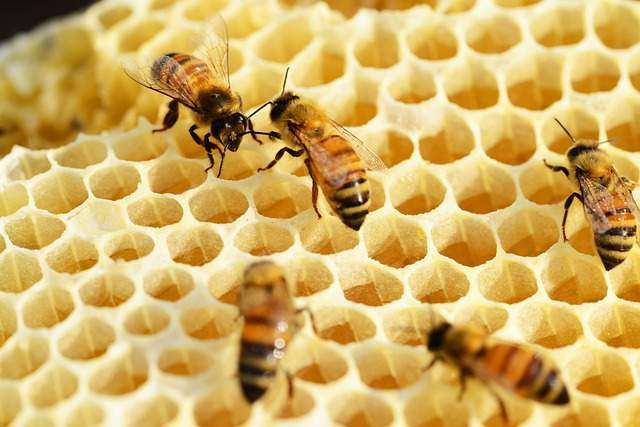
What hurts more, wasps or bees?
On average, wasps outrank bees in the severity of their sting pain. As such, despite bee stings also being particularly painful, wasp stings famously surpasses them by far. You do not want to experience the pain associated with wasp stings.
How long does a bee sting allergic reaction take?
There is no specifically stipulated timeframe that a bee sting allergic reaction may take unlike the seven days allotted to normal reactions of swelling, pain, and redness.
This is because, when the allergic symptoms sets in, it may only take the intervention of a medical professional to help relieve the affected individual.
There are cases where such reactions have even proven fatal. Therefore, given that an anaphylactic reaction to a bee sting can often start within two hours of the incident and progress rapidly, it is often advisable to seek medical care immediately if you experience allergic reaction symptoms before the development of complications.
Are bee stings poisonous?
Bee venom is ordinarily non-toxic to humans and as such will only cause local pain, swelling, and redness. As for allergic individuals, their immune system usually becomes over-sensitized to the venom in the body prompting the production of antibodies.
These include histamines and other substances that when released into the bloodstream, cause blood vessels to dilate and the swelling of some body tissues.

